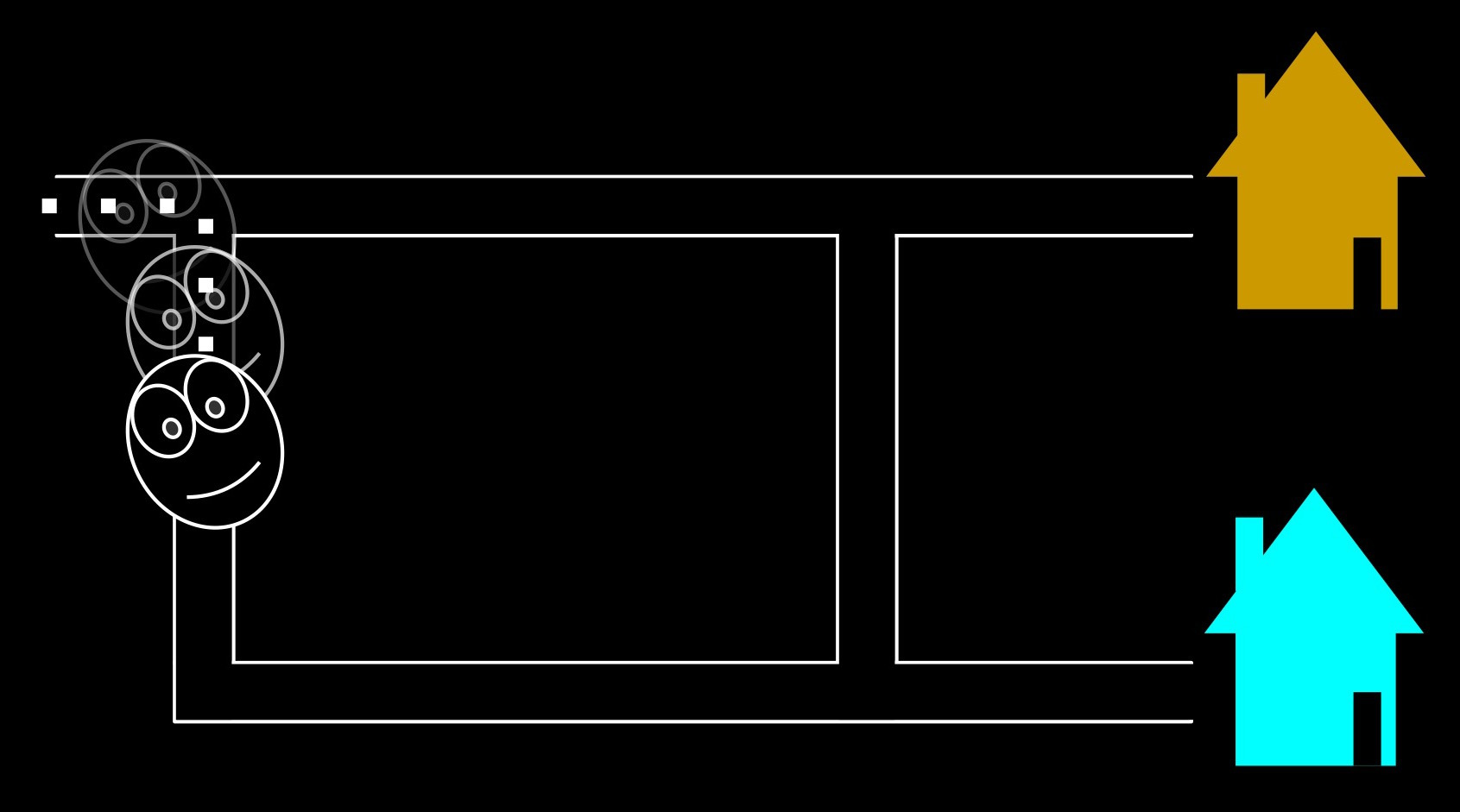Click here and press the right key for the next slide (or swipe left)
also ...
Press the left key to go backwards (or swipe right)
Press n to toggle whether notes are shown (or add '?notes' to the url before the #)
Press m or double tap to slide thumbnails (menu)
Press ? at any time to show the keyboard shortcuts
The Teleological Stance
How?
Infants can identify goals from around six months of age.
1. models (How are goals and actions related from the point of view of a 9-month-old?)
2. processes (What links the model to the infant?)
first specify the problem to be solved: goal ascription
The ‘Teleological Stance’
~ The goals of an action are those outcomes which the means is a best available way of bringing about.
Csibra & Gergely
Planning
1. This outcome, G, is the goal (specification)
2. Means M is a best available* way of bringing G about
3. ∴ adopt means M
Tracking
1. This means, M, has been adopted (observation)
2. G is an outcome such that: M is a best available* way of bringing G about
3. ∴ G is a goal of the observed action
1. models (How are goals and actions related from the point of view of a 9-month-old?)
2. processes (What links the model to the infant?)

The Simple View
Infants' (and adults') goal tracking depends on beliefs concerning relations holding quite generally between means and goals;
and they identify particular goals by making inferences from these beliefs plus their observations.
How?
Infants can identify goals from around six months of age.
1. models (How are goals and actions related from the point of view of a 9-month-old?)
2. processes (What links the model to the infant?)